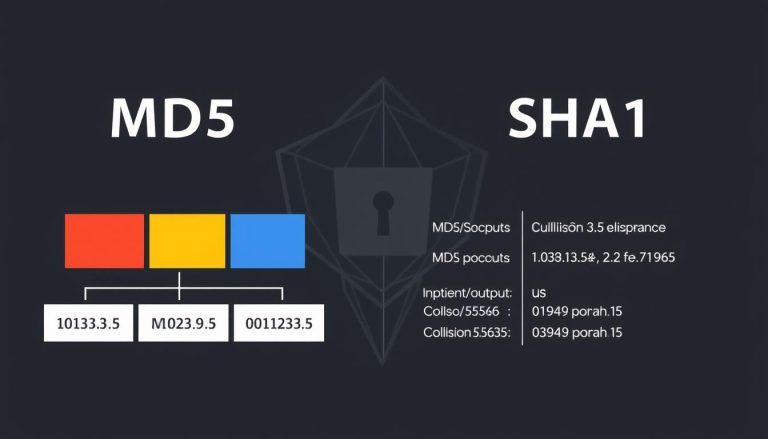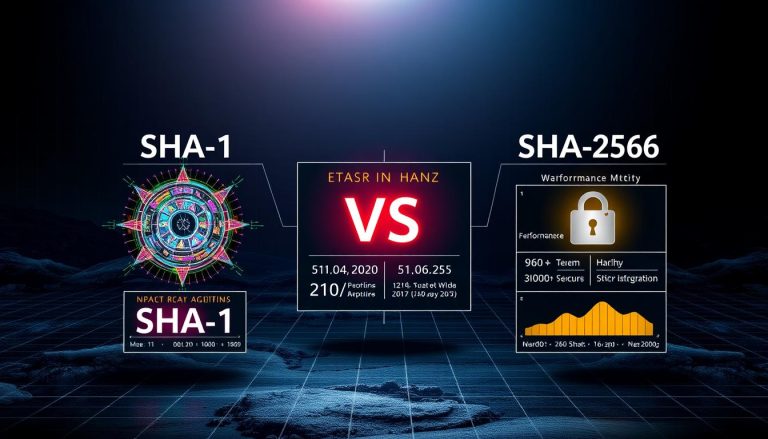PGP, which stands for Pretty Good Privacy, is a powerful security program that plays a crucial role in ensuring the privacy and confidentiality of email communication. By utilizing encryption, digital signatures, and file encryption, PGP enhances the security of email messages, protecting them from unauthorized access and tampering.
Developed in 1991 by Paul Zimmerman and now owned by Symantec, PGP software is designed to encrypt and decrypt email messages, as well as authenticate the integrity and origin of the messages using digital signatures. By employing a combination of cryptography, data compression, and hashing techniques, PGP provides a robust mechanism for securing email communication.
With PGP, a three-step process is followed to ensure secure communication. Firstly, a session key is generated, which is then encrypted using the recipient’s public key. Finally, the encrypted message is decrypted using the recipient’s private key, ensuring that only the intended recipient can access the message.
Key Takeaways:
- PGP (Pretty Good Privacy) is a security program used to encrypt and decrypt email messages.
- PGP provides email security by utilizing encryption, digital signatures, and file encryption.
- The three-step process of PGP involves generating a session key, encrypting it using the recipient’s public key, and decrypting the message using the recipient’s private key.
- PGP offers benefits such as enhanced email security and privacy.
- However, PGP also poses challenges, including complexity in usage, key management, and compatibility issues.
How Does PGP Work?
PGP (Pretty Good Privacy) is a powerful security program that provides email encryption, digital signatures, and file encryption. It works by utilizing a combination of symmetric and asymmetric key encryption to ensure secure communication. Let’s dive into the details of how PGP works:
PGP Encryption Algorithm
PGP uses a robust encryption algorithm to protect sensitive information. It generates a random session key, which is a unique encryption key for each message. The session key is then encrypted using the recipient’s public key, ensuring that only the intended recipient can decrypt the message. This approach provides a high level of confidentiality and privacy for the data being transmitted.
PGP Key Generation
Key generation is a crucial aspect of PGP. Each user generates a pair of cryptographic keys: a public key and a private key. The public key is shared with others, while the private key is kept confidential. When a user wants to send an encrypted message, they use the recipient’s public key to encrypt the session key. The recipient can then decrypt the session key using their private key. This two-key system ensures secure communication and prevents unauthorized access to the encrypted data.
PGP Security Features
In addition to encryption, PGP offers various security features to enhance the overall security of digital communication. It supports digital signatures, which use the sender’s private key to sign the message, providing authentication and verifying the integrity of the message. PGP also allows for message integrity checking, ensuring that the message has not been tampered with during transmission. Another security feature of PGP is the verification of message recipients, which helps ensure that only the intended recipients can decrypt and access the messages.
In summary, PGP works by encrypting messages using a combination of symmetric and asymmetric key encryption. It provides strong security through its encryption algorithm and key generation process. PGP’s security features such as digital signatures and verification add an extra layer of protection to ensure secure communication. By employing these techniques, PGP enables users to send encrypted messages and protect sensitive information.
Benefits and Challenges of PGP Encryption
PGP encryption offers a range of benefits that contribute to its widespread use in enhancing email security and protecting sensitive information. One of the key advantages of PGP encryption is its unbreakable encryption algorithm, which ensures that emails and files are safeguarded from unauthorized access. This provides individuals and organizations with peace of mind knowing that their confidential data is protected.
Another advantage of PGP encryption is its ability to authenticate messages through digital signatures. By digitally signing an email, the sender can verify their identity and ensure that the message has not been altered in transit. This adds an extra layer of security and helps to prevent impersonation or tampering.
While PGP encryption offers numerous benefits, it also presents some challenges. One of the main challenges is the complexity associated with its use, especially for beginners. Understanding the key generation process and managing encryption keys can be daunting for users who are unfamiliar with cryptographic principles. Proper key management is essential to ensure the security of encrypted messages.
Additionally, PGP encryption does not provide anonymity. The sender and recipient of an encrypted message can be traced, as the encryption is tied to their respective public and private keys. This can be a concern for individuals or organizations that require a higher level of anonymity in their communication.
| Benefits of PGP Encryption | Challenges of PGP Encryption |
|---|---|
| Unbreakable encryption algorithm | Complexity for beginners |
| Authentication through digital signatures | Lack of anonymity |
Compatibility can also be a challenge with PGP encryption. Both the sender and recipient need to use the same version of PGP software to ensure the successful decryption and encryption of messages. This can pose difficulties when communicating with individuals or organizations that may be using different software versions or encryption protocols.
In summary, PGP encryption provides significant advantages in terms of security and authentication. However, users need to be aware of the challenges associated with its complexity, lack of anonymity, and compatibility issues. By understanding these factors and implementing proper key management practices, individuals and organizations can leverage the benefits of PGP encryption to enhance the privacy and security of their digital communication.
Common Uses of PGP Encryption
PGP encryption is a versatile tool that finds common uses in securing digital communication. It offers various functionalities, including email encryption, file encryption, and authentication. Let’s delve into each of these use cases:
Email Encryption:
One of the primary uses of PGP encryption is to secure email communication. With PGP, users can encrypt their emails, ensuring that only authorized recipients can access the contents. This provides an extra layer of privacy and protection against unauthorized access or interception. PGP email encryption uses a combination of symmetric and asymmetric encryption, making it virtually impossible for attackers to decipher the encrypted messages. It offers peace of mind when sending sensitive information via email, such as personal data, financial details, or confidential business information.
File Encryption:
PGP encryption is not limited to emails alone; it can also be utilized to encrypt files. Users can encrypt their files before storing them on devices or in the cloud, safeguarding sensitive data from unauthorized access. Whether it’s business documents, personal photographs, or any other file that contains valuable information, PGP file encryption ensures that only individuals with the correct decryption key can access the content.
Authentication:
PGP encryption also plays a crucial role in authentication. By using digital signatures, PGP allows users to verify the integrity of the messages they receive and validate the identity of the sender. Digital signatures provide assurance that the message has not been tampered with during transmission and that it indeed originated from the claimed sender. This is particularly important in situations where trust and verification are essential, such as in business transactions or sensitive communications.
In summary, PGP encryption offers a range of applications, including email encryption, file encryption, and authentication. Its robust encryption algorithms and security features make it a reliable choice for protecting sensitive information. By utilizing PGP, individuals and organizations can enhance their privacy, ensure data integrity, and strengthen their overall digital security.
Conclusion
PGP (Pretty Good Privacy) is a widely used security program that provides email encryption, digital signatures, and file encryption. It offers a secure way to protect sensitive information and ensure privacy in digital communication.
With its combination of symmetric and asymmetric key encryption, PGP ensures that only the intended recipient can decrypt and read the encrypted messages. It also provides authentication through digital signatures, allowing the recipient to verify the identity of the sender.
While PGP encryption offers strong security, it does come with its challenges. Usability can be complex, especially for beginners, and proper key management is crucial to maintain security. Compatibility can also be an issue, requiring both sender and recipient to use the same version of PGP software.
Overall, PGP encryption is commonly used for encrypting emails, verifying identities, and encrypting files. It is a powerful tool for enhancing privacy and security in digital communication.
FAQ
What is PGP (Pretty Good Privacy)?
PGP is a security program used to decrypt and encrypt email and authenticate email messages through digital signatures and file encryption.
Who designed and developed PGP?
PGP was first designed and developed in 1991 by Paul Zimmerman.
Who owns PGP software now?
PGP software was later owned by PGP Corporation and then sold to Symantec.
What is the main purpose of PGP?
The main purpose of PGP is to enhance email security by encrypting the data, protecting communication, and ensuring privacy.
How does PGP work?
PGP uses a combination of cryptography, data compression, and hashing techniques. It follows a three-step process of generating a session key, encrypting the session key using the recipient’s public key, and then decrypting the message using the recipient’s private key.
What encryption algorithms does PGP support?
PGP supports different encryption algorithms such as RSA and Diffie-Hellman.
What are the benefits of PGP encryption?
PGP encryption provides strong security for emails and files, making them virtually unbreakable. It is widely used by individuals and organizations to protect sensitive information.
What are the challenges of using PGP encryption?
PGP can be complex to use, especially for beginners, and requires proper key management to ensure security. It also does not provide anonymity, and compatibility can be an issue.
What are the common uses of PGP encryption?
PGP encryption is commonly used for encrypting emails to enhance privacy and security, as well as authenticating messages and verifying the identity of the sender. It can also be used to encrypt files stored on devices or in the cloud, providing an extra level of security for sensitive data.
Cathy is a senior blogger and editor in chief at text-center.com.


